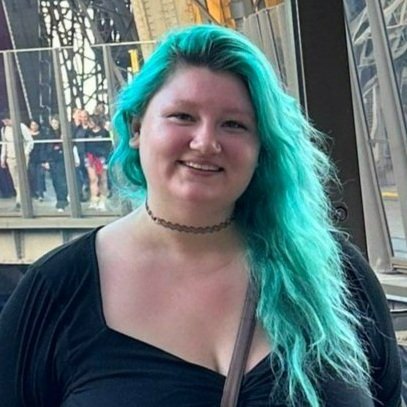Barbie & Ken: Murder Edition!
/TRIGGER WARNING: Violent Sexual Assault
Walk up to any Canadian on the street and say the name Paul Bernardo, they’ll spit at your feet. One of Canada’s most prolific serial killers, Bernardo was responsible for 3 deaths and over 30 sexual assaults. His fate for carrying out these crimes is life in solitary confinement. Yet, why does his murderous accomplice, Karla Homolka, walk free?
Paul and Karla were seen as the ideal couple. Dubbed the “Barbie and Ken” couple, they presented as a beautiful and happy pair. Inside, their relationship was anything but perfect. Before we get into the knitty-gritty of it all, let’s go back in time.
Paul was born in 1964 in Ontario. Similar to his relationship with Karla, his family presented a united and happy front. That was far from reality, with Paul’s father eventually being arrested for child molestation. When Paul was 16 years old, his mother confessed he was the product of an affair. After this revelation, his behaviour towards his mother and other women changed drastically.
Paul & Karla together (Courtesy of Psychology Today)
In 1987, a woman in Scarborough was attacked and raped after getting off the bus. For the next five years, up to 24 more assaults and attempted assaults took place. The assaulter was dubbed the “Scarborough Rapist”. Paul was questioned multiple times, and a composite sketch from a victim resembled him. The same year the assaults began, Paul and Karla met. Karla was 17, Paul was 24.
In 1990, Bernardo and Homolka were engaged. Paul, upset that Karla wasn’t a virgin when they met, allegedly ordered that Holmolka bring him a virgin. She decided on her younger sister, 15-year-old Tammy Homolka. After a Christmas party hosted by her family, Karla drugged Tammy and brought her to Bernardo to rape. While unconscious, Tammy vomited and choked to death. After cleaning and placing the body on the bed, the pair claimed she vomited in her sleep. Her death was ruled an accident. A similar incident occurred later, where the couple drugged and abused a young co-worker of Karla’s. She survived and had no memory of the event.
Karla and Paul on their wedding Day (Courtesy of Investigation Discovery)
One year after Tammy’s death, the pair married. The same day of their ceremony, boaters in St. Catharines discovered concrete blocks that encased human limbs and a head. The next day, the torso was found. The remains were identified as 14-year-old Leslie Mahaffy. A year after, the body of 15-year-old Kristen French was found. Police suspected the cases were connected.
In 1993, Karla left Paul after he viciously beat her with a flashlight. Shortly after, Bernardo’s DNA was matched with the Scarborogh Rapist, and he was put under watch.
Karla Homolka - Frank Gunn (The Canadian Press)
Karla originally wasn’t cooperative with the police. She eventually agreed to testify if she was granted full immunity. The attorney general wouldn’t agree to immunity, but offered a reduced sentence. During the four day interrogation, Homolka claimed that Bernardo was the one pulling all the strings, and she was an “unwilling participant” who lived in terror of him. Homolka was sentenced to two 12-year prison terms, to be served concurrently. However, unbeknownst to the prosecutor, Bernardo’s lawyer had retrieved six tapes hidden in Paul’s home. The tapes showed the graphic rape of Tammy, and the torture and rapes of Mahaffy and French. The tapes also proved that Karla wasn’t forced into the acts, but willingly participated in them. These tapes weren’t given to the police until 1994, over a year after Homolka’s sentencing. Despite outcries over her light sentencing, the Crown stated they had to stand by their agreement.
Bernardo’s trial began in 1995. After four months, he was found guilty on all charges and was sentenced to life in prison. Furthermore, he was declared a dangerous offender, which meant that parole was unlikely. This rang true, as his effort in 2000 to appeal was turned down, as were his 2015 and 2018 attempts. He has been in maximum security prison since 2013.
Homolka served her 12 year sentence and was released in 2005. After her release, the judge imposed a series of restrictions on her movement and banned her from having contact with anyone under 16. Only months later, her conditions were overturned by a different judge. She settled in Montreal, where she gave birth to a son. She and her new husband- the brother of her prison lawyer- eventually moved to Guadeloupe under a new name. However, she was discovered in 2012 and returned to Quebec, under intense scrutiny. She resides there to this day.
The case of these two killers has fascinated and appalled many who have come to know the facts. The horrible fate of Tammy, Leslie and Kristen and Karla’s ability to escape any true form of justice is just another twisted tale of Canadian history.
#BarbieAndKen #TrueCrime #CanadianHistory #KarlaHomolka #PaulBernardo
My name is Rebecca Skye Nicholson. I went to Carleton University for Psychology. I always had a passion for writing, and after graduating from University I felt like I needed to pursue what was important to me. I applied to the Algonquin Professional Writing Program for a chance to express myself in the best medium I know.
I have an interest in dark and twisted media. I’m also an avid feminist and I love reading about conspiracy theories. For my blog posts, I’ve decided to pick topics that fit into those three categories.








